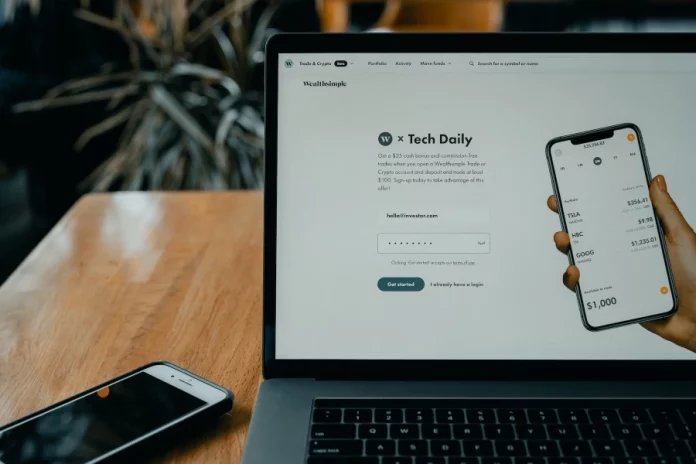Although payment methods are becoming increasingly digital, paper checks still exist. Many employers pay their workers using a check, perhaps for security, convenience, or traditionalism.
If you have a Cash App account and received a check, you may be interested on knowing which steps have to follow in order to do it. Are there any fees? Know all about it how to cash a check on Cash App.
Steps and requirements to deposit a check on Cash App
Fortunately, there are several simple steps for you to deposit your paper checks into your Cash App account:
Review The Check And Make Sure It Meets The Requirements
As it is a means of payment that you must redeem yourself, you should check that the person has placed it in your name. In this sense, the Cash App account must also meet this requirement. That is, both the check and the account must be in your name.
The currency must be in dollars. Cash App does not handle other currencies since it works with U.S. banking and financial institutions. Check these other indications to know if you can deposit a check in the app:
- The check must have been signed by the company or person who issued it.
- It must equal or exceed your Cash App deposit limit. Generally, each account has a $3,500 check limit ($7,500 per month). However, don’t worry if you are in doubt. Cash App will tell you how much you have available before you reach the monthly amount.
- Finally, you must have signed the check and written “Cash App Deposit” below your signature.
- Next, you can start the cash-a-check process on Cash App. First, open the application.
- Click on the Bank button. You will see it located at the bottom left side.
- Then, select “Checks.” From here, you will be able to scan the paper check using your cell phone.
- Enter the total amount of the check and then confirm the operation to continue.
- You must confirm the front and back of the check. Don’t forget to check the box “The check is written correctly” in both steps.
- Cash App will now ask you to take a photo of both sides to validate the check. You may be asked for permission to open your cell phone camera. It is recommended that you use a dark background so that the document can be seen correctly. Otherwise, it may be rejected.
- Do the same process to take a photo of the back of the check.
- Click “Submit” (the amount will appear so you can validate in case of an error).
- Finally, the financial platform will process the information to validate it.
How Long Does It Take To Deposit The Check In Cash App?
After you have made the deposit, you must wait for Cash App to review the data submitted. They will notify you that the check has been accepted if everything is in order.
Typically, the wait time for the check to post to your account is 3 to 4 business days. It is important to remember that every weekday until 4:00 p.m. (PST time), Cash App reviews processed checks.
Sometimes, if the check is a U.S. Treasury check, it will be deposited within one business day after acceptance. However, funds may be available in up to 15 days. This will always depend on the issuer of the check.
Tip: Do not discard the paper check for at least two weeks. You may need to submit it again. This is a recommendation made by the app itself. In case you still have doubts about how long does it take to deposit the check in Cash App you can check on allaboutcareers.
Cash App Check Fees And Other Terms And Conditions
Cash App has an advantage in this matter: is does not charge additional fees or commissions for depositing checks into an account, specially, if it is a standard check deposit. However, you will need to be sure of a few things before going through the above process.
To make sure that there are no problems with depositing the check into Cash App, you should be aware of specific requirements in addition to the ones mentioned previously. For example:
- It must not have expired.
- It must not have been deposited or modified, or altered. Generally, you have 90 days to redeem it.
As for the Cash App limits, we have that:
-
- You can only send $250 within 7 days and receive up to $1,000 within 30 days.
- It is possible to increase the limit. To do this, you will need to confirm your identity from the app. The platform will ask for your full name, date of birth, and last 4 digits of your social security number.
- Once the information is verified, you can start receiving up to $1,000 in checks.
What If You Can’t Deposit A Check In The Cash App?
You may not see the “Checks” option in the Cash App for technical or account reasons. If so, try the following:
- Check that you have the latest version of Cash App installed on your phone. If you have Android, go to the Play Store and search for the app. That way, you will see if it is updated or not.
- Check that your cell phone camera is working correctly. Remember that Cash App asks you to access it to take pictures of the check. If there is an error on your device, this could be a problem that prevents you from depositing the check.
- Make sure your Cash App account is linked to a valid bank account or debit card. Otherwise, it may not allow you to deposit checks.
- If all of the above is in order, the check deposit option in Cash App may not be enabled in your region. This option is very new. It only arrived on the platform in 2023.
- In case you still do not see the “Checks” option or have another problem, please contact the app support area for assistance.
Please note that the check must be kept the same or previously deposited. It must also be in good condition and properly signed by the issuer. The bank may request the funds back without prior notification if this is not respected.
Does Cash App Deposit Checks Instantly?
As long as you have your debit card linked to your Cash App account, the system offers instant deposits to your bank account instantly. However, if you opt for this check deposit option, Cash App charges a fee of 0.5% to 1.75% per check (minimum amount is $0.25).
Meanwhile, standard deposits are free, and the funds can be deposited in 1 to 3 business days. Of course, if you need the money to be credited to your account as soon as possible, it is recommended that you opt for the instant option.
Keep in mind that this is a new feature, that you find out just now. It is also possible that it’s not yet available in your region. Please consult the Cash App customer service or support center if you have any doubts
Overview Of How To Deposit A Check In The Cash App
Cash App is a financial platform that provides services in terms of bank transfers, expense management, investments, etc. As we have already seen, it can deposit checks as long as the account and the check are in your name.
Depositing a paper check is very simple. It is easy to use if you need to send money to third parties or want to link it to your bank account to reach more people. You only need to have the app updated to access this option. Don’t forget these general aspects on how to deposit a check on Cash App:
- Check that you meet the requirements. Remember that the check cannot have expired. Tearing them up after the maximum time (15 days) in which the money should have already been credited to the account is also advisable.
- Although the procedure is quite simple, there may be delays. Depending on the issuer, the deadlines may be longer. Also, the app will need to perform a series of validations to corroborate, among other things, that it is in your name, valid, and has not been altered.
- Cash App has “Mobile Check Capture,” a feature available to some users. If you do not see it available on your device, you will likely not yet have the latest version, or it is simply not enabled in your location. In any case, check weekly to see if you already have this option. Cash App takes a photo of both sides of the check through this feature. This makes verification much simpler and faster.












